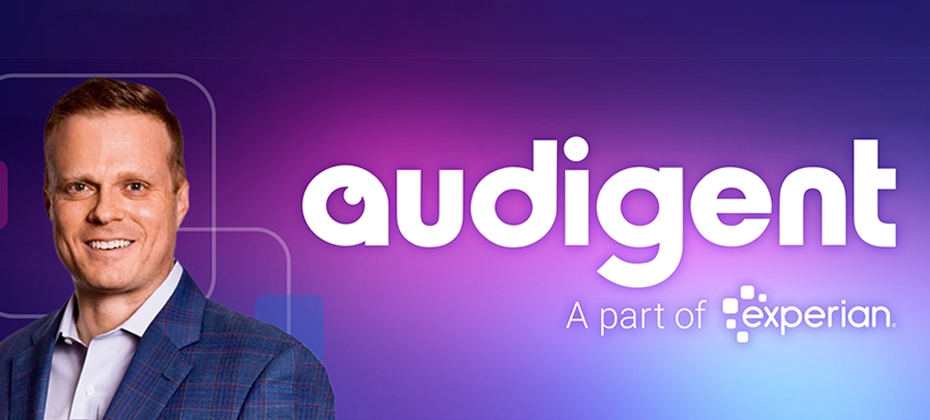
As more Americans emerge from the economic depths of the recession, they’re reminded by one significant fact: not all consumers reduced their debt burdens during 2011. Super-prime VantageScore® consumers — those with scores of 901 to 990 — actually increased debt by $100 billion from Q4 of 2010, notably in new mortgage, bankcard and auto debt. Mortgage lending activity quickens At the close of 2011, automotive loans and bankcard originations showed the biggest upticks. While new mortgage lending remained weak, the origination volumes of $407 billion in Q4 represent both an increase from the previous three quarters in the year and a heavy weighting toward refinance activity. In fact: More than 75 percent of dollars originated for single-family home purchases in Q4 of 2011 were refinance volumes. As interest rates remain low during the first half of 2012, additional refinancing activity is expected, providing a silver lining to the persistently slow activity in this sector. The latest wave of refinance activity indicates that many homeowners are still striving to stay in their homes and smooth out their cash flow through refinancing. Housing will continue to struggle through 2012 Mortgage-lending volumes remain at extremely low levels, despite record low interest rates. A new round of declining home prices in key markets in Q4 2011 compounded housing sector troubles. The national home price index fell by 4 percent from a year ago, with many major markets seeing further price declines in excess of 10 percent from a year earlier. Through all of this, mortgage delinquency exposure remains high, but 30-plus DPD balances have decreased for 10 consecutive quarters, falling to $565 billion in Q4 of 2011. Regionally, mortgage delinquencies represent 6 percent to 8 percent of all mortgage debt, except in California and Florida, which were especially hard hit by the credit crunch and recession and continue to see such delinquencies representing at least 10 percent of mortgage loan outstanding balances. Further economic gains anticipated Until housing rebounds, the nation’s unemployment rate is expected to stay relatively flat from its March 2012 level of 8.2 percent. The increase in gross domestic product will continue to contribute to increased private-sector hiring, which will slowly have a notable effect on the overall number.

To gear up for the second full day of Vision 2012, we chat with Kerry Williams, Experian group president, to discuss how clients can achieve growth using three key strategies. Check out the video to see his recommendations:

The first day of Vision 2012 covered numerous topics and offered attendees many new industry insights. In this episode of Experian TV, we catch up with Steve Wagner, president, consumer information services, to discuss universe expansion and strategies to find new consumers, and Tony Hadley, senior vice president, government affairs, to review consumer financial literacy and the CFPB. We also sit down with Andy Sheehan, senior vice president of marketing, to discuss this year’s Vision theme: growth.

The lifespan of a fraudster is short, but prolific. It typically takes about seven days to wreak millions of dollars of damage across a wide network of unsuspecting customers. The fraudsters begin by sending tens of thousands of emails to unsuspecting folks—your customers. They politely ask them to log-in to their bank account to confirm their password. The emails look real enough to come from your financial institution. In fact, they look so real that a percentage of account holders think they’re helping the bank rectify a problem, while they’re actually handing the fraudster their critical account data. Once handed the login and password information, the fraudster’s well-oiled network taps into accounts, transfers funds to offshore accounts, cleans out balances, and leaves the account holders holding the empty bag of overdrawn accounts because of identity theft. Most fraudsters are so clever and so bold, they often send a second email to remind account users that they still need to confirm their password. Net gain: A second wave of accounts to tap, swap and swindle. Just when account holders are realizing they’ve been cleaned out, when their banks are calling them about irregular account activity, or when their credit card companies are sending them breach notification letters, they disappear into thin air. But they’ll most assuredly be back. What You Can Do to Stop Fraud At Vision 2012, Experian is presenting new analytics that show that the vast majority of new account fraud occurs in the first seven days. Many institutions believe that if they have good technologies in place to stop fraud at the time of account origination, they’re all set. Wrong. Even with the best systems in place, no financial institution or person is immune, and it’s critical that we monitor accounts after they are opened to look for signs of suspicious activity. Here are some tips to help you stop or prevent fraud: Be aware that fraudsters are 10 times faster at creating fraud than we are at catching them: most bulldoze their way through accounts and disappear within 15 days, yet it takes an average of 151 days for us to identify it. Be vigilant to warn your customers about fraudsters and identity thieves with newsletter articles, blog stories, press releases and seminars. Ask your customers to pinpoint questionable behavior, such as new account openings without a birth date, but with the same name and social security number. Re-check accounts after they have been opened, which can identify suspicious activity and allows for a significant lift in fraud captures. Consider creating videos on YouTube with fraudster scenarios. Use your social media tools to share fraudulent activity with your customer base. Deploy Experian’s latest fraud detection and prevention platform, Experian’s Precise ID, to offer cutting-edge resources that enable you to outpace criminals by detecting, avoiding, managing and actually preventing current-account fraud activity –– within the first seven days of account origination. For more information, download: “Fraud detection in newly opened accounts: Connecting data helps predict identity theft” whitepaper.

Lending activity is quickening, yet the overall debt burden remains high. Unemployment remains high nationally, though consumer spending is steadily increasing. Housing remains a stumbling block for the economy, while loan delinquencies show signs of improvement for most lines of business. What does this all mean? Our overall economy is recovering. While it’s no boom, it’s still a financial and emotional roller coaster, but with little gloom and no doom. Read our analysis of Consumer Credit Trends, released today at Vision 2012. A few highlights: Economic indicators are improving – The nation’s economic rebound from the Great Recession is real. While conditions haven’t quite returned to pre-downturn levels, the rate of recovery, which first emerged in June 2009, accelerated at the end of 2011 and that improvement is continuing strongly today. Consumers continue to manage significant debt obligations – On the debt front, overall burdens still remain high for many consumers despite further declines in outstanding loan balances at the end of 2011. In fact, total outstanding consumer debt has fallen more than $1 trillion since its peak in 2008. Lending activity is quickening – New lending has picked up, although 2011 brought a mixed story for that indicator. Bankcard originations and especially automotive loans were the biggest positives, as consumer confidence began to recover in response to improving economic factors. However, new mortgage lending remained weak. Delinquencies continue to trend lower – Loan delinquencies continue to show signs of improvement for most lines of business. Tighter lending standards and a change in payment hierarchy have sparked substantial improvements in the performance of newer originations in auto and bankcard loans. Housing will continue to struggle through 2012 – Housing remains a major stumbling block for the economy, and it promises to be some time before the housing market produces a real rebound from the 2008 bust. Mortgage-lending volumes remain at extremely low levels, despite record low interest rates. Further economic gains are anticipated – Most economists anticipate further improvement in key business barometers over the next few years. They foresee inflation-adjusted gross domestic product for the United States rising this year and in the next two by a moderate amount, with consumer spending also increasing. The Bottom Line: The nation’s economic recovery shows signs of real momentum. While it may be slow, it will be steady. Consumers continue to exhibit signs of increased confidence, and this is helping to bring discretionary spending back online. For lenders, 2012 is the year for them to return to pre-recession strategies if they are to grow significantly. They should concentrate on specific markets and portfolios. They must mitigate vanilla offerings of credit with market share gains.

Mortgage industry trends have already been a huge topic of discussion at Vision 2012. Although we’re seeing signs of recovery in the auto and bankcard lending sectors, we're clearly not out of the woods yet for the mortgage industry. On average, the S&P/Case Schiller index reports that home prices have declined four percent YOY, and they are expected to decline in many major markets as foreclosure activity picks up in the second half of this year. As long as mortgage delinquencies occur, the economy will lag, too. There’s another thing weighing down the mortgage industry. The credit tightening experienced in the mortgage market since 2006 is likely to continue, especially given the stringent criteria proposed by the Dodd-Frank Act for a “qualified mortgage.” This new criteria has increasingly stringent requirements for creditworthiness, loan size and debt-to-income ratios. Using the qualified mortgage criteria, we analyzed mortgages for the past six years and found that in 2006, nearly 1 in every 2 loans would not have met this criteria. This percentage steadily declined until 2009 when less than 1 in 3 loans would not have qualified. Believe it or not, since the onset of the credit crisis, the quality of the loans and borrowers has actually improved – by 2011, the quality of mortgage originations improved to the point that only 27 percent do not meet the qualified mortgage criteria. We attribute this decline to the increasingly stringent requirements imposed on borrowers to establish their creditworthiness and their ability to pay their mortgage. Especially as we see the economy improving in other areas (the average monthly debt-to-income ratio has been declining steadily – from 19 percent in 2011 down from 27 percent in 2006), hopefully this coupled with this mortgage data is a good sign. There’s no question that we’re not out of the woods yet, but these positive signs in consumer creditworthiness are cause for optimism. Recommended Reading Experian Addresses State of U.S. Credit Markets and More in New White Papers Getting Ready for Vision 2012 [Video] Photo: Shutterstock


